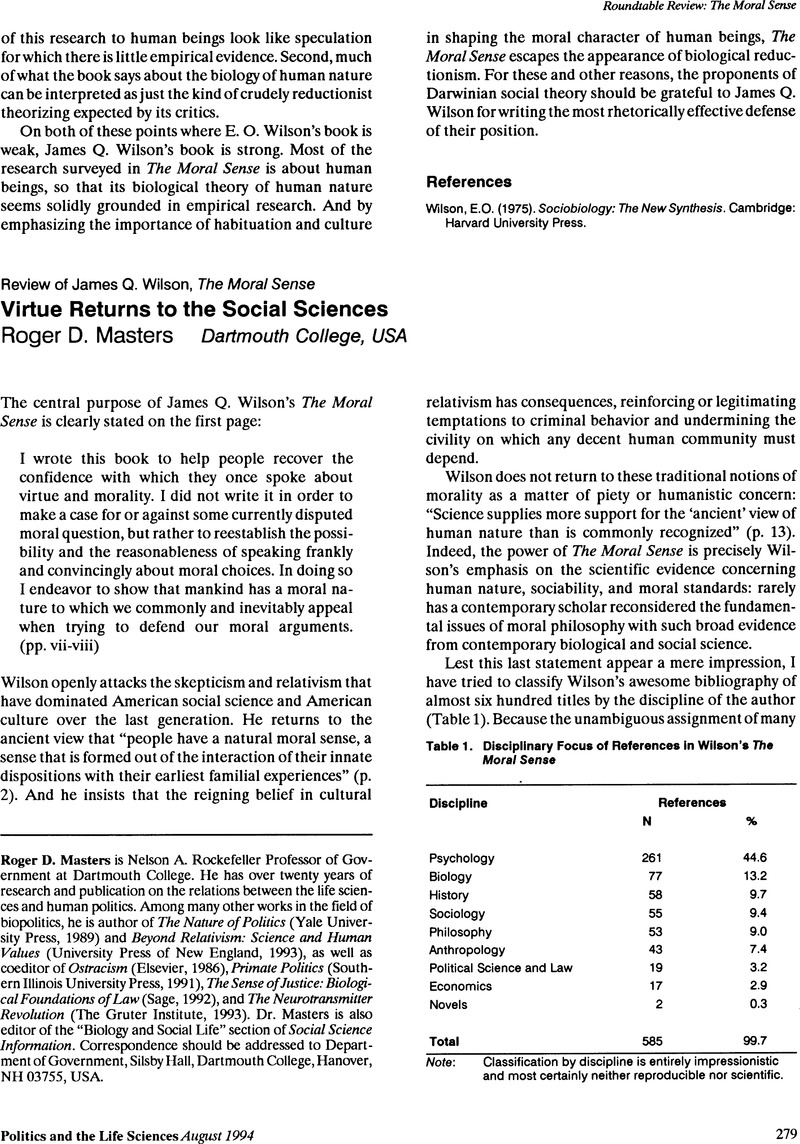No CrossRef data available.
Article contents
Virtue Returns to the Social Sciences
Published online by Cambridge University Press: 17 May 2016
Abstract
An abstract is not available for this content so a preview has been provided. Please use the Get access link above for information on how to access this content.

- Type
- Roundtable Review
- Information
- Copyright
- Copyright © Association for Politics and the Life Sciences
References
Ellis, L. (1987a). “Neurohormonal Bases of Varying Tendencies to Learn Delinquent and Criminal Behavior.” In Morris, E.K. and Braukmann, C.J.(eds.), Behavioral Approaches to Crime and Delinquency. New York: Plenum.Google Scholar
Ellis, L. (1987b). “Relationships of Criminality and Psychopathy with Eight Other Apparent Behavioral Manifestations of Sub-Optimal Arousal.” Personal and Individual Differences 8:905–25.CrossRefGoogle Scholar
Hare, R.D. and Schalling, D., eds. (1978). Psychopathic Behavior: Approaches to Research. Chichester and New York: John Wiley.Google Scholar
Rolls, E.T. (1989). “The Processing of Face Information in the Primate Temporal Lobe.” In Bruce, V. and Burton, M.(eds.), Processing Images of Faces. London: Ablex.Google Scholar


